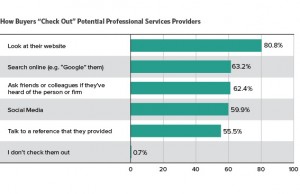In working with companies intent on business growth, I consistently see them encounter one major barrier. It’s challenging to overcome because it’s nearly invisible to senior leaders and too painful for middle management to aggressively address.
This barrier is setting minimum expectations for the frontline supervisor role. Almost across the board, companies have promoted their most loyal, reliable, and technically skilled operators to frontline supervisor positions. In this capacity, frontline leaders are expected to monitor workflow, fight fires, track attendance, and implement hands-on training programs. The problem is that these expectations are far too low.
Why ‘Invisible’?
Following the current process for promoting leaders internally can set companies up for stagnated growth. And we just don’t see it. Why?
- It’s the way the organization has always functioned — and it’s been relatively successful.
- Many frontline supervisors were promoted specifically for their ability to quickly resolve problems on the floor, not because they can plan, develop, and lead people. Due to the demands of the job, these hardworking supervisors are often given few training or development opportunities. Just because someone was successful in a previous job doesn’t mean his performance will measure up at the next level (particularly without training).
- Low expectations are constantly reinforced because every level of management asks its direct reports some version of these questions: “How much product’s on the dock? What were our sales today? What quality issues do we have?” These are the tasks they focus on in lieu of growth initiatives.
Raising the bar for your entire organization is essential for inspiring real growth. Take Didion Milling, a family-owned agricultural processing business, for example. Three years ago, the 40-year-old company decided to undergo an internal overhaul and shift its focus toward improving its people, product, and processes.
“Often, leaders spend more time doing things they have to do instead of things they should be doing,” said Curt Miller, mill operations manager at Didion Milling. “To fix this, you have to empower the staff on the floor to take more responsibility and give them the tools to do so. This allows leaders to focus on growth opportunities.”
Why Is Change So Painful?
Frontline supervisors are our most dependable, loyal, and highest-performing workers. They proved themselves by working hard. We don’t want to lose them, nor do we want to demotivate them by removing them from a position they feel they earned. It’s painful because it requires tough conversations with good people.
But without addressing this major issue, companies will continue to limit opportunities for innovation, improvement, and growth. Don’t be afraid to confront valued employees. Just make sure you position the conversation to acknowledge the strengths and value of the person; remain direct and respectful about the gaps in their knowledge.
A Workable Approach
Nurturing real leaders starts with setting high expectations and respecting every individual. Here are five key tips for unlocking your employees’ potential and your organization’s growth opportunities:
1. Establish a high-performance job profile. Set high standards within job descriptions so current and potential leaders know exactly what’s expected of them. These requirements should clearly state that frontline leaders must inspire, solve problems, focus on improvement, and develop and engage people. Establishing these expectations will attract the right people for leadership roles or push a leader to rise to the occasion. This job is radically different from “supervise the line and make sure the product gets out.”
These high expectations helped Didion Milling. “It’s OK to have high expectations,” said Miller. “It’s actually empowering. If you say you don’t believe in people or you have negative assumptions about their abilities, your expectations will be low, and people perform to that low standard.”
2. Align your coaching with these new expectations. Identify employees’ strengths, and make sure they’re in sync with the job requirements. If you see gaps, spend time coaching, mentoring, and developing them to be successful in their roles. Great employees want to get better.
3. Redeploy if necessary. If you have talented and valuable people in the wrong roles, it not only hurts them, but it also hurts your company. Be open to the idea of reorganizing responsibilities or returning people to previous roles. Often, when current frontline supervisors are presented with these new expectations, they self-elect to return to a previous job in which they were highly successful.
4. Hire smart. Using your new job profile, hire or promote the best candidates possible. To ensure they have the leadership skills necessary, simulate certain scenarios they might encounter, and see how they respond. Make sure to involve people who will be reporting to this leader in the interview process, too.
5. Reinforce the higher expectations. Middle and senior management need to be asking, “What have you done today to promote a high-performing team? What ideas have your team members identified that could improve or grow our business?”
Your company’s success ultimately depends on the people driving it. When you challenge frontline employees and their leaders, encourage growth and professional development, and raise the bar for job performance, you can get back on track to growth. Liberate your employees to perform, and you’ll also enjoy the freedom — including more time and less stress — that comes with it.
Just imagine how much time middle and senior management would have to focus on business improvements and growth if they weren’t spending hours looking at what’s happening today.
Business & Finance Articles on Business 2 Community
(319)
Report Post







